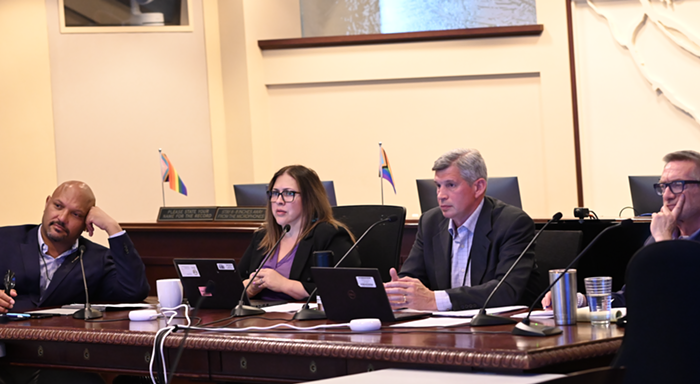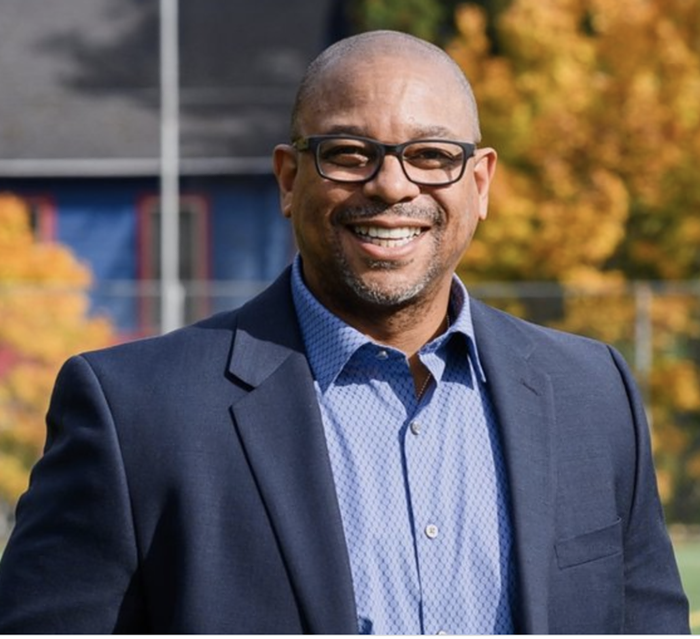
When a bill criminalizing the provision of gender-affirming care for transgender children advanced out of the Idaho House of Representatives in early March, Dr. Kara Connelly braced herself for the worst.
Connelly is a pediatric endocrinologist and professor at Oregon Health and Sciences University (OHSU), where she specializes in providing care through the university’s Transgender Health Program.
Demand to join the program, which saw some 750 individual patients last year, has been steadily growing for years—well before Texas became the first state to effectively criminalize gender-affirming medical care for trans children in March. Connelly knew lack of access to care in Idaho would test her already strained workload.
“The capacity is being very much stretched,” Connelly said. “It has been for the past couple of years.”
The Idaho Senate ultimately killed the bill, which would have been among the most extreme anti-trans pieces of legislation passed in the country in recent years—making it illegal not just for parents to pursue gender-affirming care for their children in Idaho, but also to seek that care in another state.
But the bill’s success in the Idaho House, and the ongoing progress of similar bills in other states, remains a clear reminder of the threats facing transgender children, their supportive families, and the healthcare systems set up to support them in Oregon.
“Much of the public knows that Oregon is generally an affirming state and has protective laws in place,” Connelly said. “But they aren’t aware that as these needs are growing because of the less affirming states… that that’s going to put an even greater strain on the care that we’re providing to Oregon youth.”
OHSU isn’t the only gender-affirming care provider that has seen a steady increase in demand. Since Dr. Karin Selva helped launch the Transgender Clinic at Randall Children’s Hospital in northeast Portland eight years ago, she has seen demand rise from around five to ten referrals a year to about 400.
“That's without these [legislative] bills," Selva said. "The floodgates haven’t opened with transplants from other states, but more and more and more, youth and families are seeking care.”
According to Rook Bartz, gender and sexual health program manager at Legacy Health, the increase in patient volume is a sign that, in Oregon and elsewhere, the atmosphere towards trans people and rights is improving.
“The more acceptance increases, the more we’re going to see patients,” Bartz said.
That acceptance may have helped fuel the national backlash against trans rights and visibility that is resulting in a renewed effort to restrict those rights.
“It’s because we’re winning and making progress,” said Katie Carter, CEO of the Pride Foundation. “There’s greater acceptance for LGBTQ people across the board, and… we’re making more progress than sometimes even we give ourselves credit for. These are the last-ditch, awful efforts of a movement that is trying to erase our communities.”
Across the country, 2022 is on pace to be a record-setting year for the introduction of anti-trans legislation. A total of 34 states have already introduced nearly 150 pieces of anti-trans legislation in the first three months of the year, with Iowa and Tennessee having introduced 14 separate pieces of legislation each.
This legislative barrage comes at a time when trans kids already face heightened risks of bullying and discrimination and the transgender community at large faces increasing risks of violence. Fifty-seven transgender or gender non-conforming people were killed in the US in 2021, making it the deadliest year on record.
With November’s midterm elections fast approaching, these draft bills are also seen as a political strategy.
“These different issues are known to be things that mobilize a conservative base,” Carter said. “And these are coordinated attacks across the country—these are legislators that are talking to each other, and they know that these are bills that rile people up.”
Targeting parents, which the Texas directive does, is an especially pernicious way of trying to restrict kids’ care. Connelly said that she sees a number of parents who have questions about gender-affirming healthcare and fears that these types of restrictions will stop those conversations from happening at all.
“Once kids have the support of their parents, we celebrate that—because we know from the research and we see it in our clinical experiences all the time, that kids thrive when they have their parents’ support,” Connelly said.
The stakes are extraordinarily high. Securing gender affirming care for kids can be lifesaving.
“We hear this directly from our patients: If they are able to access the gender-affirming care as a young person that they need, then they can continue on through their adolescence and going through high school focusing on all the other things that are important in their lives—like their studies and their sports and their friendships and their relationships with their parents—without gender having to be the number one focus for all of those years,” Connelly said.
That, among other reasons, is why the OHSU program has already seen an influx of new patients from states like Texas, Tennessee, and Alabama where access to gender-affirming care has been restricted or is on the precipice of being restricted. Selva said that she too has seen families move from out of state to Oregon to access care with Legacy.
With demand growing, both programs are endeavoring to expand their reach. Both programs have added new medical providers and telehealth services in recent years, while also partnering with physicians, clinics, and hospitals and offering trainings elsewhere in the state. Connelly said that she recently worked directly with a primary care provider in Idaho who has a transgender patient.
“We can think of lots of ways where we would love to expand and get our tentacles out to the inpatient floors, to schools and the school health clinics. But do we have the bandwidth to do that right now?” Selva said. “No.”
More resources are likely necessary across the board if Oregon wants to be able to provide every trans person in the state—and those who may continue to arrive from out-of-state—the healthcare they need.
The state could have a role to play. Since last year, the newly-energized effort to effectively ban abortion has tracked closely with the effort to criminalize gender-affirming care for trans children. Texas, the first state to pass a six-week abortion ban, was also the first state to criminalize gender-affirming care.
“There is a direct line between the anti-abortion bills and the anti-trans bills,” said Blair Stenvick, a spokesperson for Basic Rights Oregon. “At their heart, they’re both about controlling the bodies of vulnerable people.”
Oregon has already responded to attacks on reproductive rights. In preparation for the passage of Idaho’s six-week abortion ban, the Oregon legislature passed its own bill to establish and direct $15 million to a new reproductive health equity fund—a direct acknowledgement that many more Idahoans will likely be coming to Oregon to access reproductive healthcare and that Oregonians accustomed to traveling to cities like Boise for care may now be forced to seek it in their home state.
Even now, despite its strong statewide legal protections, significant disparities in the availability of gender-affirming resources within Oregon means that some patients are forced to drive hours from places like Southern and Eastern Oregon to access healthcare in Portland. Selva said that she saw one patient who bussed 12 hours from Eastern Washington for hormone therapy.
“We’re in a hole,” Selva said. “Healthcare is just not where it needs to be. Not just with transgender care—with everything. Are we going to build more clinics, are we going to have more physicians right now? We can’t make that happen. I think the resources need to go to… basics.”
Trans people are less likely to be insured and more likely to report cost-induced barriers to accessing healthcare than cisgender people to begin with, and, given the cisnormativity of the healthcare system, more likely to encounter barriers to quality care within the system as well.
The ultimate goal for LGBTQ+ providers and advocates is a future in which every trans person in Oregon and every person who might move to the state can find gender-affirming care in their local community and access it without a months-long wait.
“This support for gender-diverse youth and transgender youth does not live [exclusively] in a gender center,” Connelly said. “It’s the responsibility of everyone to create spaces where youth can thrive.”



















